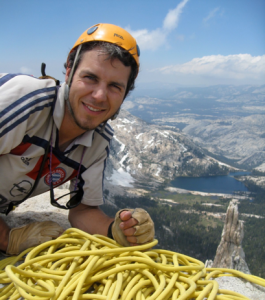 |
Signatures of mountain building: Middle Miocene reorganization of deformation, erosion, and deposition on the northeastern Tibetan PlateauRichard Lease Research Geologist Wednesday, February 5th, 2014 |
||
|
|||
|
The great height (4.5 km), area (2.5 million km2), and crustal thickness (65 km) of the Tibetan Plateau make it an ideal natural laboratory for understanding large-scale continental deformation. Insight into mountain-building processes within Tibet should be transferrable to more modest mountain belts as well as past orogens. The timing and nature of lateral expansion and upward growth of the Tibetan Plateau, however, remains enigmatic. In this talk I quantify the Cenozoic history of range growth on the northeastern margin of the Tibetan Plateau by examining (i) thermochronology from contractional mountain ranges, (ii) magnetostratigraphy and provenance from adjacent foreland basins, and (iii) balanced structural cross-sections. Results indicate that north-vergent mountain ranges grew between 50 and 20 Ma and a kinematic shift to east-vergent range growth occurred by ~13 Ma. Within the adjacent Xunhua-Linxia basin complex, sequential range growth is expressed by punctuated, 2- to 3-fold increases in sedimentation rates that suggest periods of enhanced subsidence. The most rapid rates occur within the finest-grained strata, consistent with a “sediment starved” basin during the interval of most intense deformation. Additionally, the introduction of new detrital zircon provenance signatures within basin fill heralds the erosion of newly-emergent basement terranes during range growth. Overall, variations in the direction and timing of range growth in northeastern Tibet demonstrate how India-Asia convergence was manifest on the margin of the Tibetan Plateau throughout the Cenozoic. Observations from basins and mountains document a middle Miocene change in the kinematic style of plateau deformation: from NNE-SSW contraction along a trajectory that mimicked India-Asia collision to the onset of east-west contraction. Finally, cross-section restorations suggest that more than half of Cenozoic shortening in this area occurred since middle Miocene time, as northeastern Tibetan crust began moving eastward, out of the path of collision. |
|||

